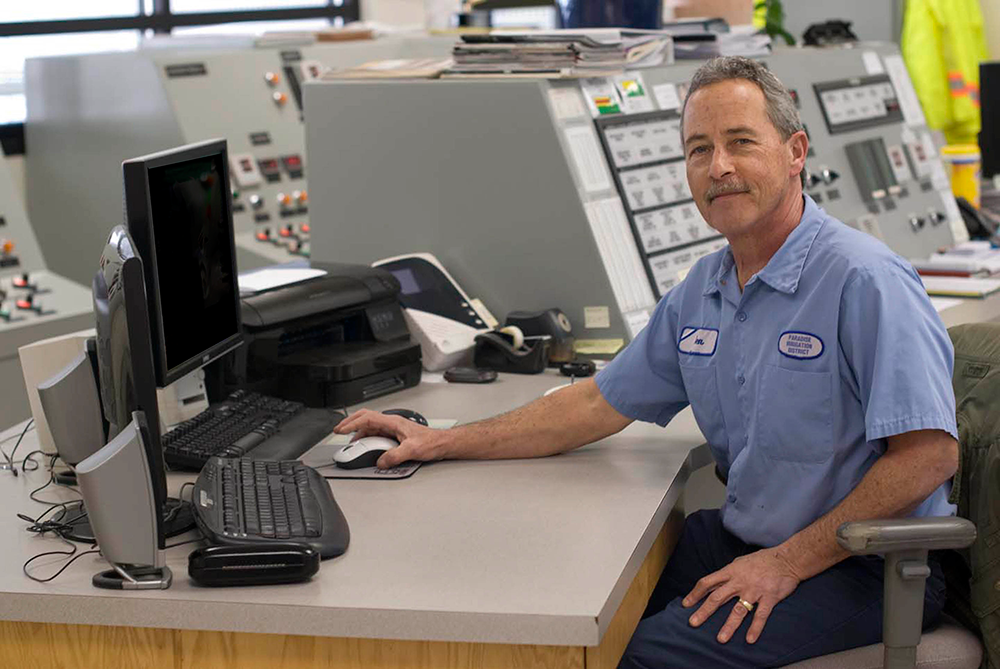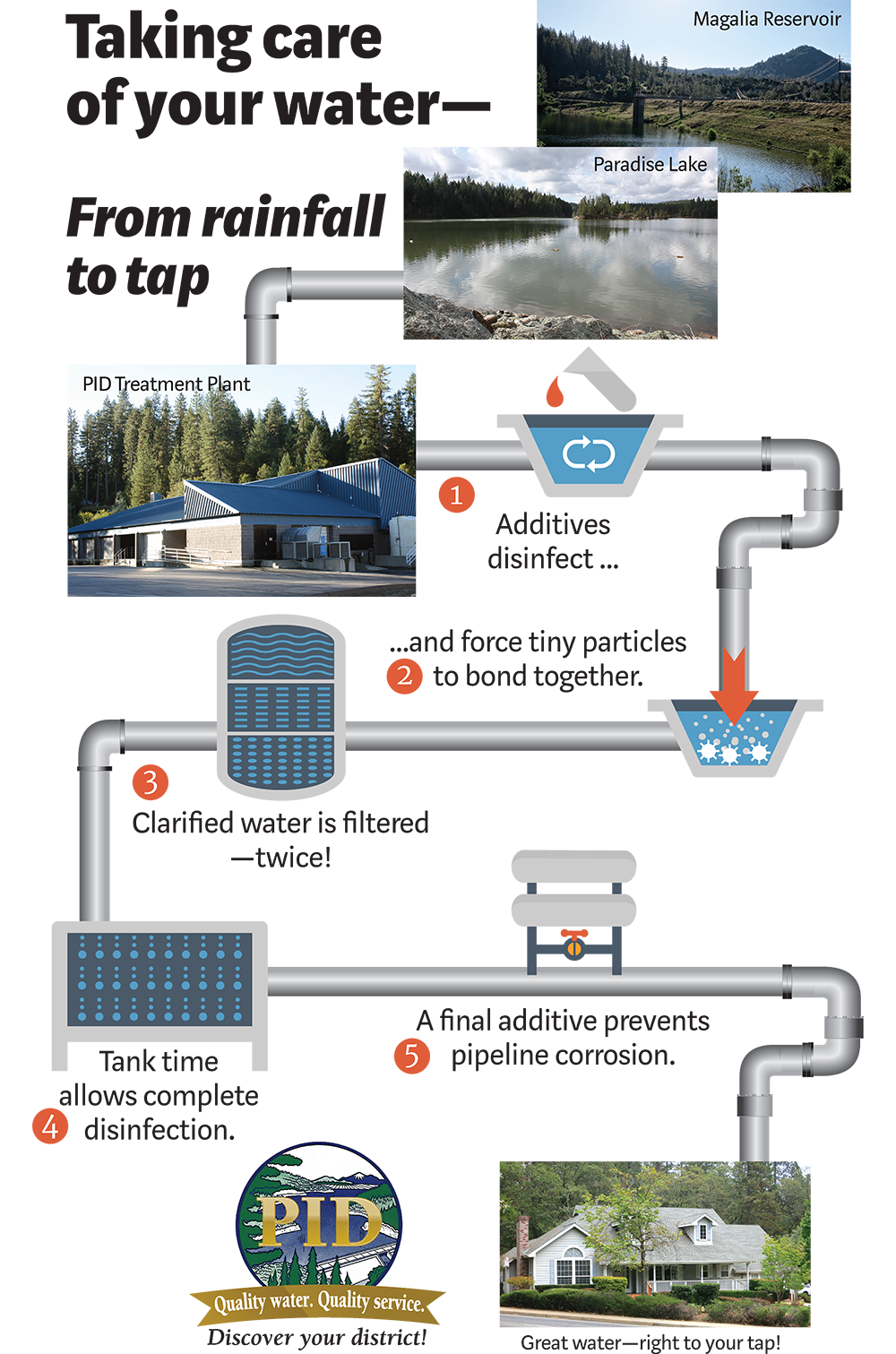How is your water treated?
Raw water from Magalia Reservoir or Little Butte Creek through the Magalia Bypass is treated before being distributed to Paradise residents. The treatment process consists of coagulation, clarification, filtration and disinfection. The coagulation process consists of adding alum and polymer to the water to chemically bond very small particles in the water into larger particles. Coagulated water is passed through a bed of course granulated media in the absorption clarifiers. Coarse media in the clarifier removes most of the coagulated particles.
Clarified water flows downward through tri-media filters consisting of anthracite, sand, and fine garnet to remove the remaining particulates and "polish" the finished water. A minimum amount of chlorine is added to the finished water to meet California state requirements. Chlorine can be added either to the raw water prior to filtration or to the filtered water. Filtered water is routed through a treated water storage tank to provide sufficient time for the chlorine to kill any bacteria remaining tin the water. This water is then routed to off-site reservoirs for distribution to Paradise residents.


Disinfection—Chlorine is added (1.5 to 1.7 ppm) to kill or inactivate disease-causing organisms which may be present in the water (disinfection), control the growth of algae and assist with coagulation.

Coagulation—Coagulation consists of adding aluminum sulfate, aluminum chlorhydrate and two polymers to the raw water to chemically bond very small particles (turbidity) into larger particles (floc). Most of these larger floc particles are removed from the raw water as they pass through a bed of coarse, granulated media in the up-flow clarifiers.

Filtration—The clarified water then flows downward through tri-media filters (consisting of an-thracite, sand and fine garnet) to remove additional (turbidity and floc) particles which may still be in the water.

Tank time—After the two filtration processes the water is well below the State requirements for turbidity (0.2 NTU). The water is routed through a treated water storage tank which provides sufficient chlorine contact time to thoroughly disinfect the water. A minimum amount of chlorine remains (1.0 ppm) in the treated water to ensure the California health requirements are met in the distribution system so the potable water is delivered properly to the consumer at all times.

Corrosion protection—Finally, as the treated water leaves the plant, zinc orthophosphate (a corro-sion inhibitor) is added. This is added to minimize corrosion of the District’s steel pipelines, and minimize lead and copper leaching from customers’ pipes and faucets.
Fluoride is not added to our treated water, nor is it detectable in the raw water.
